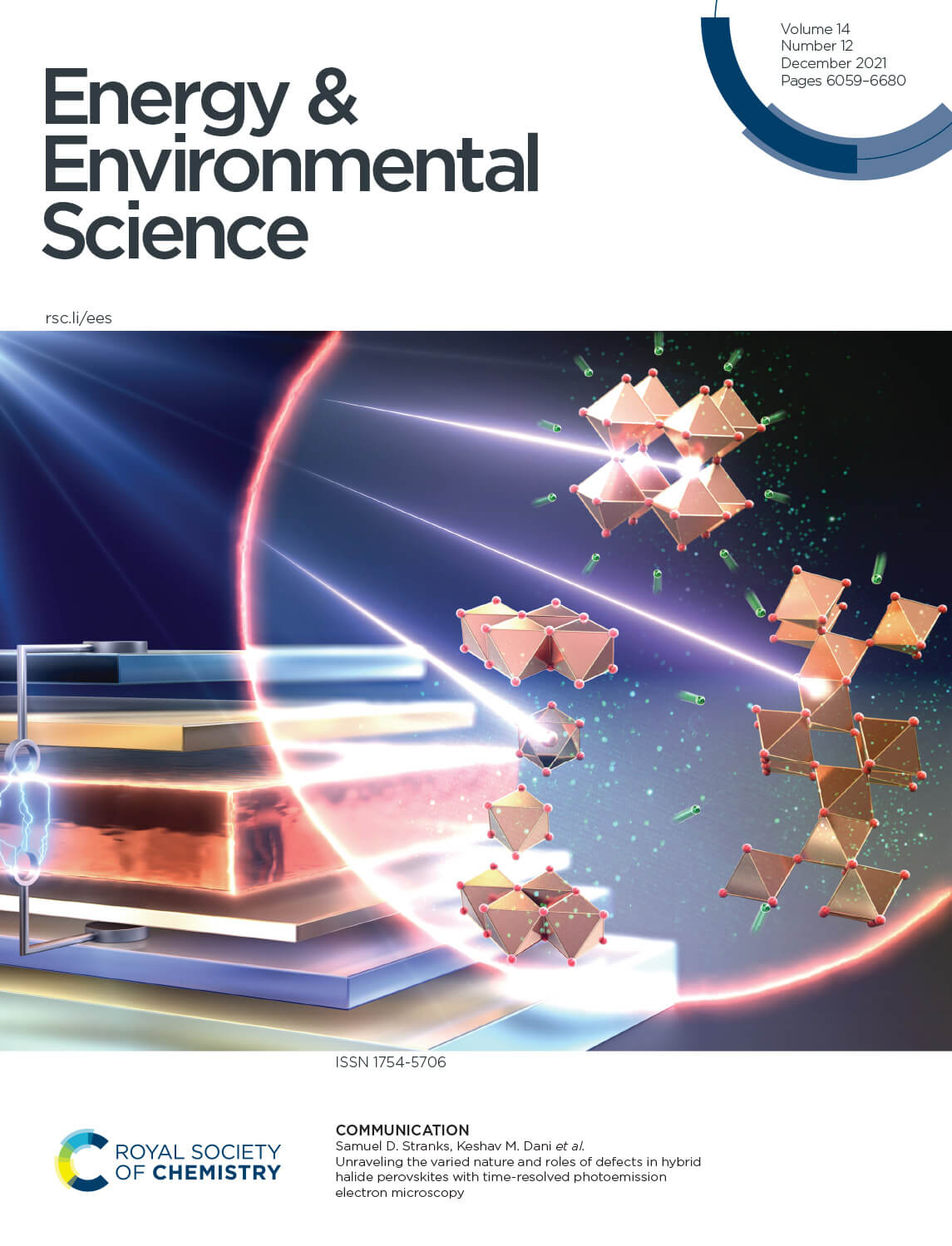論文雑誌「Energy & Environmental Science」のカバーピクチャーを制作しました[沖縄科学技術大学院大学]
弊社で制作しました沖縄科学技術大学院大学 Kosar Sofiia様のカバーアートが
イギリスの王立化学会発行の学術雑誌 Energy & Environmental Science
2021年12月号に選ばれました。

Kosar Sofiia様
01 December 2021, Issue 12 Link
Sofiia Kosar, Andrew J. Winchester, Tiarnan A. S. Doherty, Stuart Macpherson, Christopher E. Petoukhoff, Kyle Frohna, Miguel Anaya, Nicholas S. Chan, Julien Madéo, Michael K. L. Man, Samuel D. Stranks and Keshav M. Dani
With rapidly growing photoconversion efficiencies, hybrid perovskite solar cells have emerged as promising contenders for next generation, low-cost photovoltaic technologies. Yet, the presence of nanoscale defect clusters, that form during the fabrication process, remains critical to overall device operation, including efficiency and long-term stability. To successfully deploy hybrid perovskites, we must understand the nature of the different types of defects, assess their potentially varied roles in device performance, and understand how they respond to passivation strategies. Here, by correlating photoemission and synchrotron-based scanning probe X-ray microscopies, we unveil three different types of defect clusters in state-of-the-art triple cation mixed halide perovskite thin films. Incorporating ultrafast time-resolution into our photoemission measurements, we show that defect clusters originating at grain boundaries are the most detrimental for photocarrier trapping, while lead iodide defect clusters are relatively benign. Hexagonal polytype defect clusters are only mildly detrimental individually, but can have a significant impact overall if abundant in occurrence. We also show that passivating defects with oxygen in the presence of light, a previously used approach to improve efficiency, has a varied impact on the different types of defects. Even with just mild oxygen treatment, the grain boundary defects are completely healed, while the lead iodide defects begin to show signs of chemical alteration. Our findings highlight the need for multi-pronged strategies tailored to selectively address the detrimental impact of the different defect types in hybrid perovskite solar cells.
Link